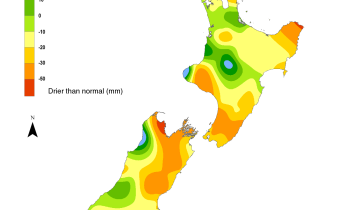El Niño/Southern Oscillation (ENSO)
Strong El Niño conditions continued during January 2016. Sea surface temperature (SST) anomalies still exceed +2°C in the central and eastern Pacific, but have weakened from the peak values in November-December 2015.
The latest monthly SST anomalies in the NINO3.4 is at +2.14°C, while the NINO3 region (eastern Pacific: 90°W – 150°W) is currently sitting at +2.03°C. The NINO4 index value (in the western Pacific) is +1.33°C. The sub-surface ocean temperature anomalies in the eastern Pacific have decreased further since December, and reach now about +4°C at 75-100m depth near 120°W (compared to peak values of about 7°C in November 2015). Conversely, the Southern Oscillation Index (SOI) has strengthened to about -2.0 for the month of January.
Strong westerly wind anomalies (weaker easterly trade-winds) continue to affect the western and central Pacific.The contrast in convective activity in the Maritime Continent and areas east of the Dateline has intensified: rainfall is much above normal along the equator from the Dateline to about 140°W, whereas there is a much more pronounced dry region over Indonesia and north of Australia during January 2016. The Intertropical Convergence Zone (ITCZ) was displaced towards the Equator in the central and eastern Pacific, and the South Pacific Convergence Zone (SPCZ) was shifted to the north and east of normal, both signals being consistent with El Niño. The ENSO Precipitation Index (ESPI) reflects El Niño conditions with a value of +1.74 (value to the 4th of February 2016).
A Madden-Julian Oscillation (MJO) pulse reached into the Maritime Continent over the last week of January and is forecast to intensify over the next two weeks, with increased intra-seasonal convective activity expected in the western Pacific, i.e. a pattern opposed to the background climate anomalies. This MJO activity could potentially trigger Tropical Cyclones initiation in the coming weeks. International guidance indicates that El Niño conditions will continue (96% probability) over the next three months (February – April 2016) and will rapidly decay thereafter, with a return to normal conditions or a transition to La Niña conditions by August – October 2016.







